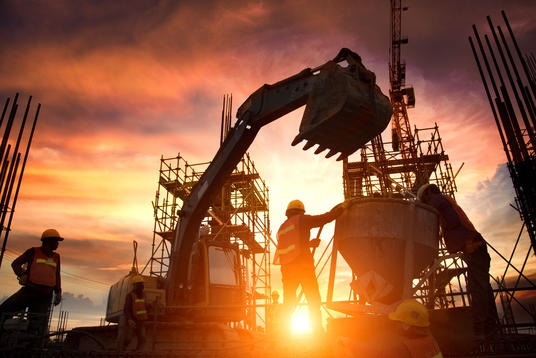This article was first published on LinkedIn.
Nine months into living and dealing with the pandemic, and despite persistent calls for a green recovery – more remains to be done when it comes to decarbonising heavy industries.
Given industrial emissions account for nearly a third of global greenhouse gas emissions, we can’t achieve the goals of the Paris Agreement without addressing energy-intensive sectors – we knew this pre-COVID, and we know this now. So ahead of the UN’s Climate Ambition Summit, it’s the right time to look at the progress that’s been made, but more crucially assess where greater ambition and action is needed.
There certainly have been encouraging noises from businesses and governments on green recovery and commitment to climate on a broad level, with a growing acknowledgement that we don’t have to choose between recovering financially and recovering sustainably.
Despite breakthrough net zero pledges from China, Japan and other nations in recent months, and the promising carbon-reduction plans of US President-elect Joe Biden, we’re also hearing that the world's 20 biggest economies have so far provided more cash for fossil fuels (over US$230 billion) than clean energy (roughly US$150 billion) in COVID-19 stimulus packages. By another estimate, green stimulus announced this year is lower as a percentage of total stimulus than during the 08/09 financial crisis. As of last month, green recovery spending has made up less than 1% of the US’ $3 trillion coronavirus stimulus, and essentially none of Japan’s US$2 trillion stimulus.
So something’s not adding up.
These long-term climate goals and talks of green recovery feel like empty promises – they’re not backed up by the necessary short-term emissions reduction policies or plans to get us there. A desktop review of global green recovery announcements and publicly available reports shows very little in the way of using today’s stimulus to decarbonise heavy industry. It’s the industrial-sized elephant in the policymaker’s room.
Even looking to Europe where there are promising signs of ambition for decarbonising heavy industry given its aims to reach carbon neutrality by 2050, there’s a concerning lack of detail. The release of the EU Industrial Strategy and Circular Economy Action Plan earlier this year provide a valuable goal-setting exercise and make the case for bolstering the climate credentials and competitiveness of European industry – but there appears to be no plans for stimulus to kickstart its low carbon recovery. If this is the case, that means recovery spending will not only dwarf the planned investments for many of its decarbonisation strategies, but it might even be used in ways that hinder its progress.
So how can we expect European industry to still achieve the intended decarbonisation outcomes and with a smaller budget? Considering the pandemic has quite clearly shown the strategic value of industry for Europe’s continued sustainable growth, it’s hard to understand why there is this stimulus gap.
Yet Europe is not alone when it comes to forgoing the chance to speed up heavy industry decarbonisation through the pandemic, while also boosting global resilience to mounting climate risks. And unfortunately, the impacts of this are far worse than just a ‘missed opportunity’. Vivid Economics’ Greenness of Stimulus Index (GSI) shows that among more developed countries, the US, Australia, Italy and Japan have so far failed to address the negative carbon impacts of their energy-intensive industries in their stimulus, which overall is leading to more – not less – emissions being pumped into the atmosphere. Emerging economies that are heavily dependent economically on their heavy industries, like China, India and Mexico, are also following this trend.
Besides questioning why policymakers are failing to make the most of this narrow, one-time only window to reinvent our global industrial economy for the better, it’s also worth thinking about what do they need to get going?
This area of work is something we’ve been focusing on at the Climate Group in partnership with campaign organisation, Mighty Earth. We’ll soon be releasing Global Framework Principles which will provide guidance for industry, government and other key decisionmakers to both stimulate economic growth and recalibrate toward a 1.5°C climate trajectory. Each Principle represents an essential lever that policymakers can employ and companies can endorse to ensure the successful decarbonisation of steel, cement, chemicals and other heavy industries. Overall, the Framework is underpinned by core values for a just, accessible, regenerative, and inclusive recovery that have been elevated by a growing chorus of activists, policymakers, and corporate leaders over the past few months.
In the meantime, as world leaders prepare to gather tomorrow on the fifth anniversary of the Paris Agreement, it’s time for them to put their money where their mouth is on green recovery – and that includes putting a sharp focus on heavy industry. The global community has a golden opportunity to affect major policy change in the wake of government responses to COVID – all of which will either lock out or lock in a carbon budget in line with a 1.5°C scenario. There is simply no time to lose.
